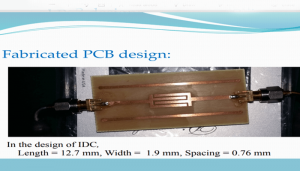Researchers at the International Institute of Information Technology Hyderabad have conducted an experimental study of radio frequency-based sensing of antigens that has potential impact on the current widespread use of chemical-based diagnostic testing.
An early diagnosis and subsequent treatment of any disease begins with early screening. If someone who is unwell from the apparently healthy general population, can be detected early, they can be placed under immediate treatment. And in the case of communicable diseases like Covid-19, the affected persons can be isolated to prevent a community outbreak. The most commonly used lab tests to detect the presence of antibodies either in the blood or swab sample are the ELISA or the PCR test. However these methods are not without drawbacks. For one, a chemical-based testing is quite sophisticated and hence expensive. Plus, it is labour intensive in its analysis causing a time lag in the reporting of results. It was to overcome these flaws that biosensors, consisting of an electronic system and a semi-conducting material are gaining traction for prompt and convenient sample testing.

Radio Frequency Waves
At IIITH, researchers have explored the possibility of using radio frequency waves for testing of biochemical samples and the initial results look very promising. For pathological purposes, since biosamples are non-magnetic in nature, capacitive sensing or ability to detect a biosample that is conductive is used for identification of such samples. For their study, the IIITH team used a typical Interdigitated Capacitor-based sensor, consisting of ‘fingers’ placed on a substrate. The number of fingers as well as the gap between them directly influence the frequency response of the sensor. A sample is placed in the middle of the IDC sensor or the radio frequency cavity. The idea is to first pass a broad band of frequencies through the cavity in the absence of any sample and measure the resonant frequencies that appear on the right side. Next, the same test is performed in the presence of a sample. Explaining the process simplistically, Prof. Syed Azeemuddin says, “If for instance we have a biosample permitting ‘x’ amount of electrical waves through it, and then I add an antigen to the sample which allows ‘x±Δx’ frequency to pass through, we detect the concentration of the antigen based on the shift in the resonance frequency.”

Advantages
The advantages of this methodology are many as have been demonstrated by the research team. “Essentially a single sensing platform can perform both qualitative and quantitative analysis of several biosamples. Not only is it efficient and fast, but also portable and can be reused multiple times,” says Prof. Syed. With encouraging preliminary results, the team is currently working on making them repeatable and robust, opening up an alternative testing method in the pathological domain.


